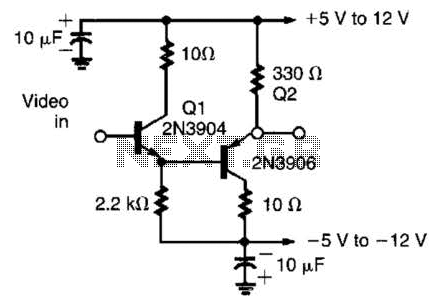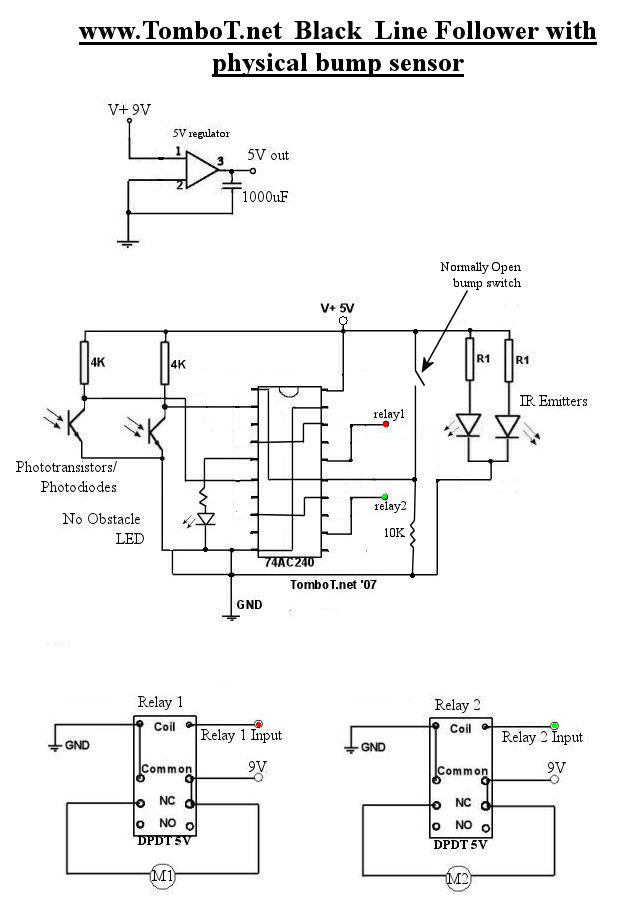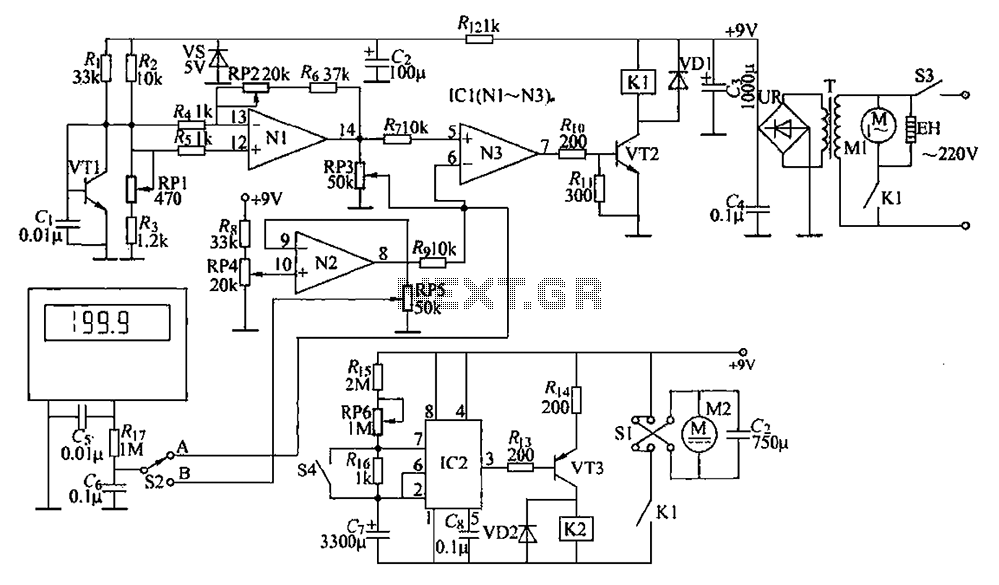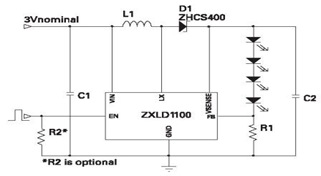
555 timer circuit diagram of a group of anti-jamming
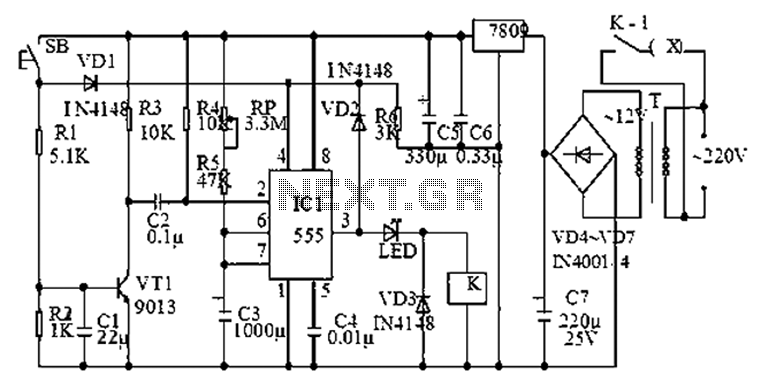
The 555 timer is commonly used in time-based circuit designs, particularly in monostable configurations. This setup is straightforward and requires only a few resistors and capacitors to achieve triggering. However, external interference can affect the operation of the circuit connected to pin 2 of the 555 timer. To mitigate this, a clever design utilizes pin 4 for a forced reset function, allowing the circuit to avoid interference in the timer operation. The circuit has been tested and is functional. When the switch SB is disconnected, pin 4 of the 555 timer is connected to ground through resistor R6, forcing a reset of the 555 timer. During this state, no external interference on pin 2 will activate the timer. When button B is pressed, power is supplied through diode VD1 to pin 4, releasing the forced reset function. Simultaneously, power is applied through resistor R1 to the base of transistor VT1, turning it on. This connects capacitor C2 to the collector of VT1, resulting in a low output from pin 2 of the 555 timer. Consequently, pin 3 outputs a high signal, lighting the LED and energizing relay K, which closes contact K-1 to connect to the external power supply. The high output at pin 3 is also fed back through diode VD2 to pin 4, maintaining the self-locking circuit. After the transient period, the circuit returns to a steady state, with pin 3 outputting low, de-energizing relay K, and opening contact K-1, thus restoring the circuit to its initial state. Component selection includes the NE555, A555, or SL555 integrated circuits for the timer; resistors R1 to R7 are selected as RTX-1/4W carbon film types; variable resistor RP can be a WSW organic solid type; capacitors C2, C4, C5, and C6 are CT1 ceramic types, while C1, C3, and C7 are CD11-16V electrolytic capacitors. Diodes VD1, VD2, and VD3 are IN4148 silicon switching diodes, and VD4 to VD7 are IN4001 silicon rectifier diodes. Relay K should be chosen based on the specific electrical requirements, and a 7809 three-terminal voltage regulator integrated circuit is recommended for voltage regulation.
The 555 timer IC is a versatile component widely used in various electronic applications, particularly for generating precise timing intervals and pulse-width modulation. In this specific monostable configuration, the circuit is designed to produce a single output pulse in response to an external trigger. The simplicity of the design allows for easy integration into larger systems while providing reliable performance.
The forced reset mechanism implemented through pin 4 enhances the circuit's immunity to noise and unwanted signals, ensuring that the timer only operates when intended. The inclusion of a transistor (VT1) allows for the control of the output state based on the state of button B, providing a straightforward user interface for activating the timer.
The choice of components plays a crucial role in the circuit's reliability and performance. The use of carbon film resistors ensures stable resistance values, while the ceramic and electrolytic capacitors are selected to meet the timing requirements of the circuit. Diodes are chosen based on their switching characteristics and voltage ratings to ensure fast response times and prevent back EMF from affecting the circuit operation.
Overall, this 555 timer-based monostable circuit is an effective solution for applications requiring precise timing control, and its robustness against interference makes it suitable for various electronic projects.555 in the use of time-based circuit design from the timer circuit, generally will be 555 monostable circuit is connected, so connected so that the circuit design is simple, re quires only a few resistors and capacitors can be achieved triggering but there are also external interference on 555 feet of 2-based circuit, the circuit clever use of 555 feet of forced reset circuit 4 functions to achieve interference timer circuit. This circuit is tested and functionable. When SB is disconnected, 555 feet by 4 circuit resistor R6 is connected to ground, the circuit 555 is forcibly reset.
At this time, no matter how much interference by 2 feet, 555 circuits do not work. When you press button B, the power supply through a diode VD1 is applied to 4 feet high, forced reset circuit release function group, while power supply through a resistor R1 is applied to the base of transistor VT1, VT1 conduction so that the capacitor C2 is connected to VT1 through the collector to a low level output circuit IC 2 feet, IC flip set, 3 feet high output, LED lights, the relay K is energized, contact K-1 closed, outlet External power supply, and 3 feet high by VD2 such a high self-locking circuit output to 4 feet. After the end of the transient, the circuit turn back to steady state, 3 feet output low, the relay K energized, contacts K-1 off, the circuit returns to the initial state.
Component selection: IC1555 timebase circuit used when NE555, A555, SL555 and other base integrated circuit; R1 ~ R7 selected RTX-1/4W carbon film resistors; RP available WSW organic solid variable resistor trimming; C2, C4, C5, C6 selection CT1 type ceramic capacitors, C1, C3, C7 selection CD11-16V electrolytic capacitors; diode VD1, VD2, VD3 selected IN4148 silicon switching diodes, VD4 ~ VD7 selected IN4001 silicon ordinary rectifier diode; relay K You may need to select electrical equipment; three-terminal integrated voltage regulator type selection 7809 three-terminal voltage regulator integrated circuit.
The 555 timer IC is a versatile component widely used in various electronic applications, particularly for generating precise timing intervals and pulse-width modulation. In this specific monostable configuration, the circuit is designed to produce a single output pulse in response to an external trigger. The simplicity of the design allows for easy integration into larger systems while providing reliable performance.
The forced reset mechanism implemented through pin 4 enhances the circuit's immunity to noise and unwanted signals, ensuring that the timer only operates when intended. The inclusion of a transistor (VT1) allows for the control of the output state based on the state of button B, providing a straightforward user interface for activating the timer.
The choice of components plays a crucial role in the circuit's reliability and performance. The use of carbon film resistors ensures stable resistance values, while the ceramic and electrolytic capacitors are selected to meet the timing requirements of the circuit. Diodes are chosen based on their switching characteristics and voltage ratings to ensure fast response times and prevent back EMF from affecting the circuit operation.
Overall, this 555 timer-based monostable circuit is an effective solution for applications requiring precise timing control, and its robustness against interference makes it suitable for various electronic projects.555 in the use of time-based circuit design from the timer circuit, generally will be 555 monostable circuit is connected, so connected so that the circuit design is simple, re quires only a few resistors and capacitors can be achieved triggering but there are also external interference on 555 feet of 2-based circuit, the circuit clever use of 555 feet of forced reset circuit 4 functions to achieve interference timer circuit. This circuit is tested and functionable. When SB is disconnected, 555 feet by 4 circuit resistor R6 is connected to ground, the circuit 555 is forcibly reset.
At this time, no matter how much interference by 2 feet, 555 circuits do not work. When you press button B, the power supply through a diode VD1 is applied to 4 feet high, forced reset circuit release function group, while power supply through a resistor R1 is applied to the base of transistor VT1, VT1 conduction so that the capacitor C2 is connected to VT1 through the collector to a low level output circuit IC 2 feet, IC flip set, 3 feet high output, LED lights, the relay K is energized, contact K-1 closed, outlet External power supply, and 3 feet high by VD2 such a high self-locking circuit output to 4 feet. After the end of the transient, the circuit turn back to steady state, 3 feet output low, the relay K energized, contacts K-1 off, the circuit returns to the initial state.
Component selection: IC1555 timebase circuit used when NE555, A555, SL555 and other base integrated circuit; R1 ~ R7 selected RTX-1/4W carbon film resistors; RP available WSW organic solid variable resistor trimming; C2, C4, C5, C6 selection CT1 type ceramic capacitors, C1, C3, C7 selection CD11-16V electrolytic capacitors; diode VD1, VD2, VD3 selected IN4148 silicon switching diodes, VD4 ~ VD7 selected IN4001 silicon ordinary rectifier diode; relay K You may need to select electrical equipment; three-terminal integrated voltage regulator type selection 7809 three-terminal voltage regulator integrated circuit.

